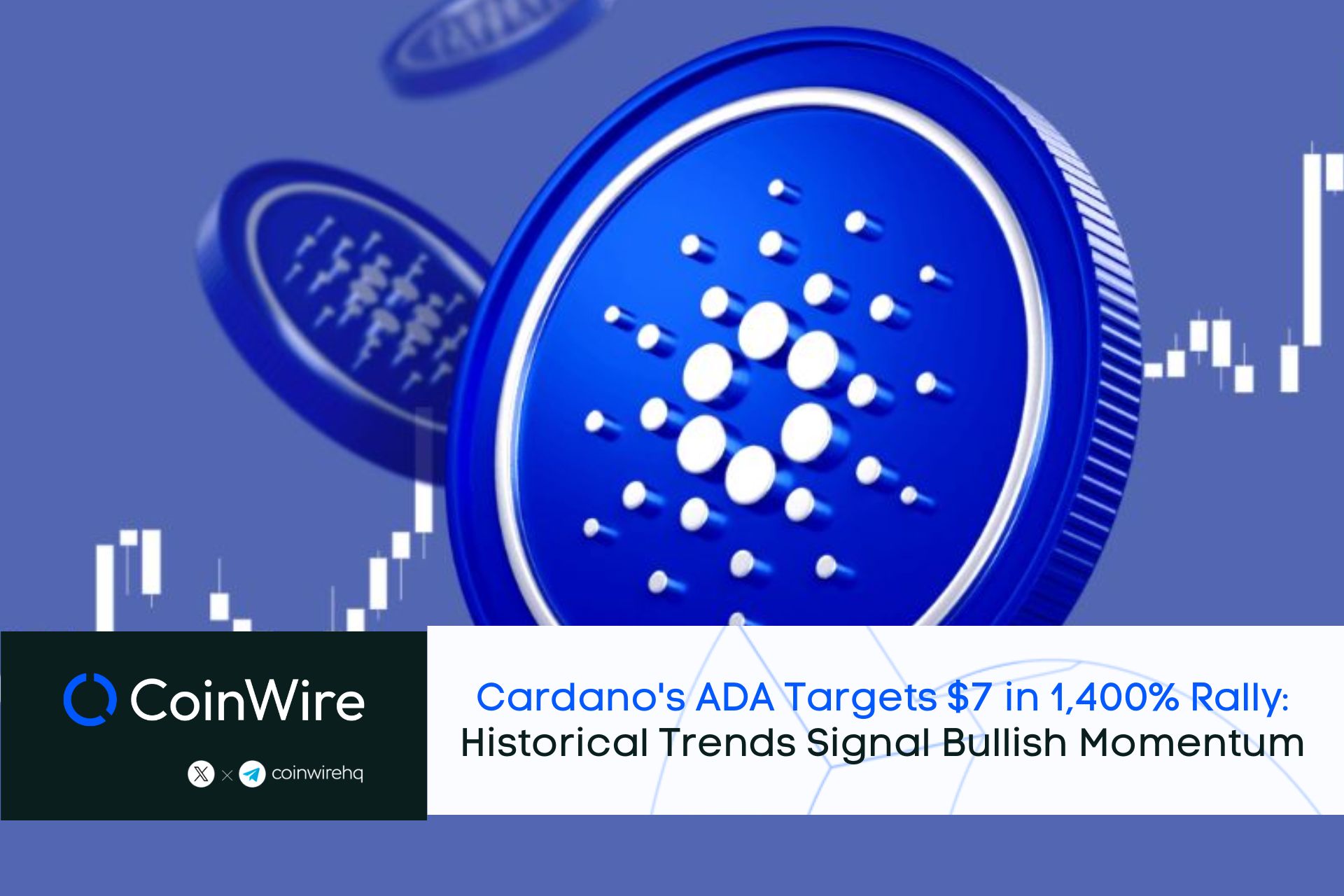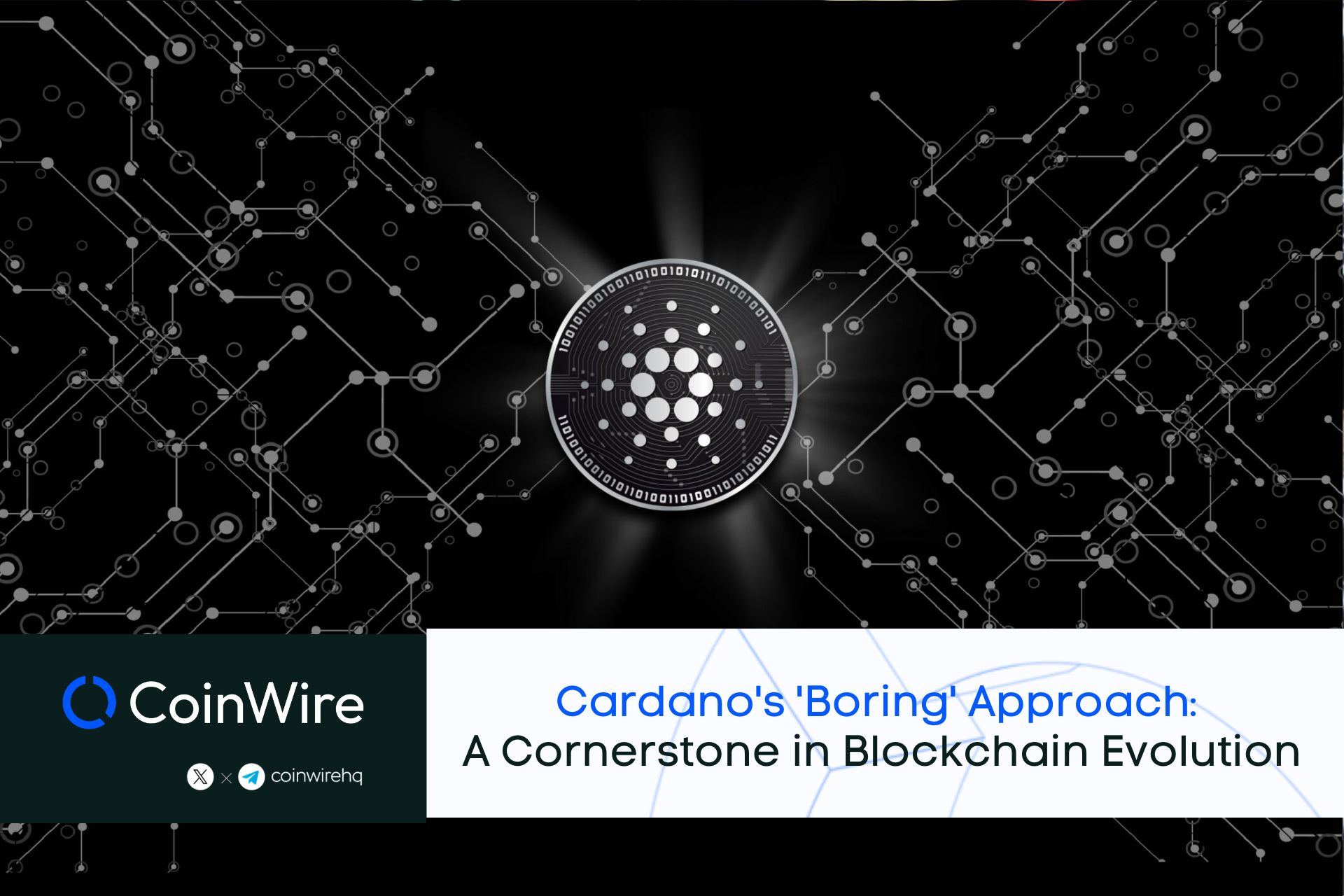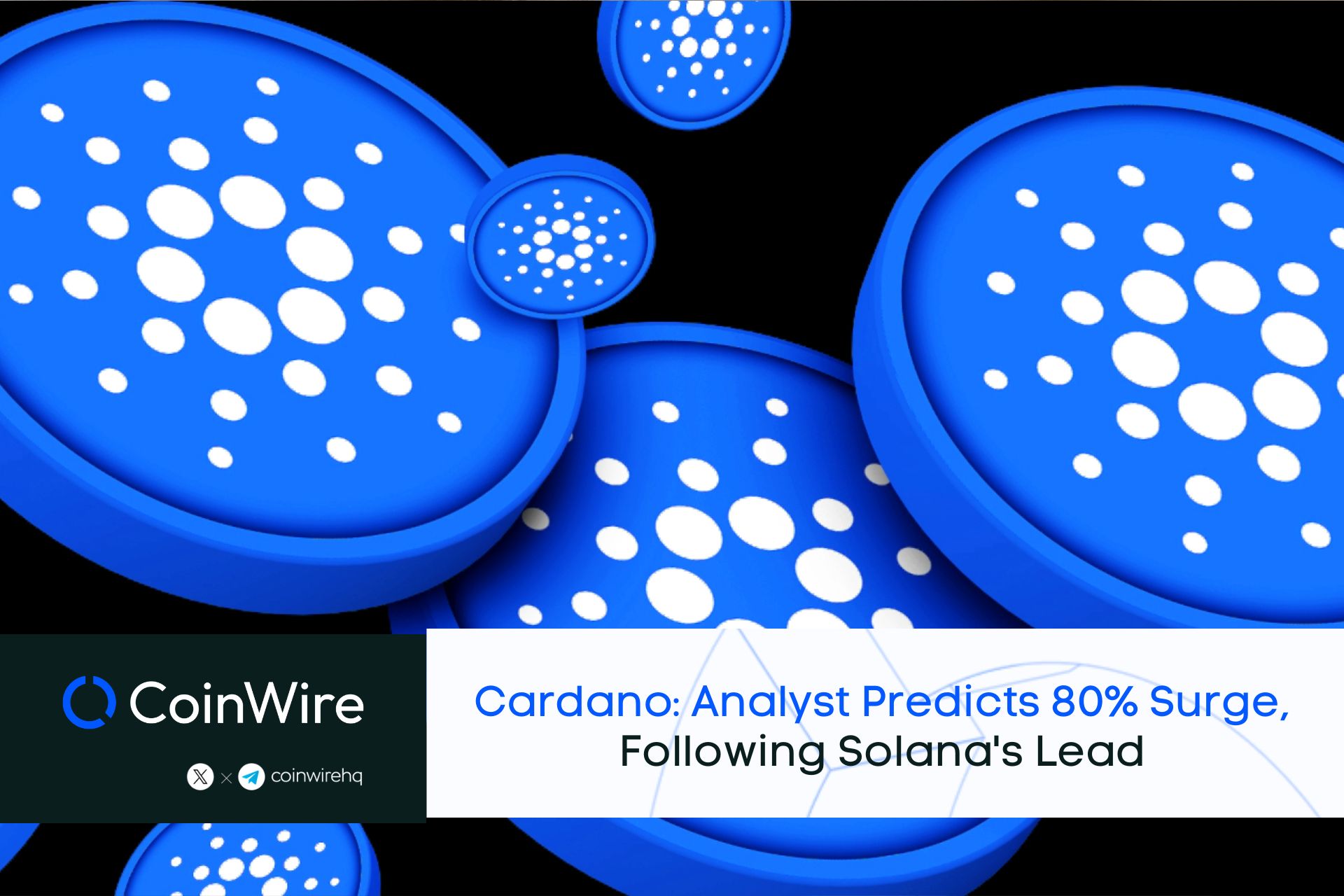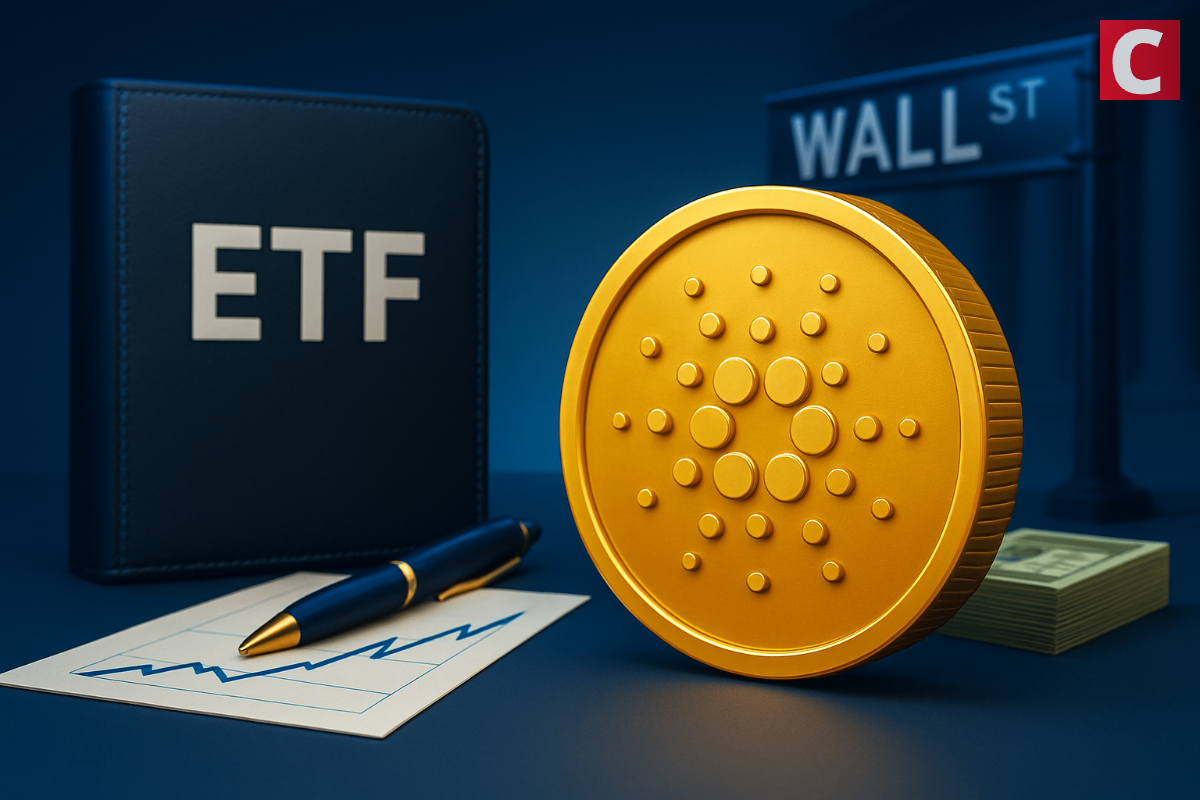Cardano vs Solana: Which is a Better Blockchain in 2023 ?
You’ve probably heard of Ethereum, the blockchain of smart contracts and dApps. But other blockchain platforms are challenging its dominance. Two of them are Cardano and Solana.ADA and SOL have grown a lot in...

You’ve probably heard of Ethereum, the blockchain of smart contracts and dApps. But other blockchain platforms are challenging its dominance. Two of them are Cardano and Solana.
ADA and SOL have grown a lot in market cap since their launch. Both can handle smart contracts, DApps, DeFi, and NFTs. But they have some key differences in their technology and working.
We’ll compare “Cardano vs Solana” on different aspects, such as technology, working architecture, smart contracts, and transaction handling capabilities.
Key Insights:
- A brief introduction of what Cardano and Solana are.
- Technical differences between both blockchain networks
- An explanation of why Solana is better than Cardano, or vice-versa.
- A future potential outlook of both decentralized platforms
Overview of Cardano and Solana
| Cardano (ADA) | Solana (SOL) | |
| Founded | 2015 (launched in 2017) | 2018 (launched in 2020) |
| Native token | ADA | SOL |
| Block time | 20 seconds | 400 milliseconds |
| Transactions per second | 1000 Tps | 65,000 TPS |
| Cost per transaction | Approx. $0.17 | Approx. $0.00025 |
| Market Cap | $9.7 billion | $6.1 billion |
| Total supply | 45 billion ADA | 550.8 million SOL |
| Consensus protocol | Ouroboros (PoS) | Proof of History (PoH) |
| Interoperability | Yes | Yes |
| Number of validators | 3200+ | 1841+ |
| Programming language | Haskell | Rust, C, C++ |
Cardano vs Solana: The Key Differences
When comparing Cardano vs Solana, there are several key points to consider. Here are some important aspects that we will be discussing in this article:
- History and Background
- Technology and Design Architecture
- Consensus Mechanism
- Scalability and Transaction Speed
- Decentralization of network
- Smart Contract Functionality
- GameFi and NFTs
- Gas Fees
- Tokenomics
- Total Value Locked (TVL) in DeFi
1. History and Background
Cardano was founded in 2015 by two people who used to work on Ethereum, Charles Hoskinson and Jeremy Wood. They had a vision of creating a better blockchain that could solve the problems of Bitcoin and Ethereum in terms of scalable, secure, interoperable, and sustainable.
Cardano is governed by a non-profit organization in Switzerland called the Cardano Foundation. It launched its network to the public in 2017 after raising $62.24 million in an ICO.
Solana was started in 2018 by Anatoly Yakovenko and Raj Gokal. They want to create a fast blockchain that can handle many transactions simultaneously. After developing it for two years, they launched Solana in 2020. They raised a total of $315.8 million in various funding rounds.
2. Technology and Design Architecture
Cardano’s architecture consists of two layers:
- Cardano Settlement Layer (CSL)
- Cardano Computational Layer (CCL).
The CSL manages ADA token transfers and the state of the ledger. The CCL enables smart contracts, decentralized applications, and other advanced functionalities.
Different CCLs can be customized to meet different requirements for regulation, security, or privacy.
![Cardano vs Solana: Which is a Better Blockchain in [currentyear]? 2 Cardano Architecture](https://coinwire.com/wp-content/uploads/2023/06/cardano-architecture-1024x661.png)
Solana’s architecture has a single layer that uses a new technique called Proof of History (PoH) to achieve high performance and scalability.
PoH is a way of encoding time into the ledger by creating a verifiable sequence of hashes. PoH allows Solana to process transactions in parallel and achieve milliseconds of finality.
Solana also uses other innovations such as Turbine, Gulf Stream, Sealevel, and Cloudbreak to optimize transaction processing and smart contract execution. You can read more about Solana architecture here.
Winner: Tie: Cardano’s layered architecture is designed to provide more security, while Solana’s single layer is easier to develop dApps.
3. Consensus Mechanism
Cardano uses “Ouroboros”, a proof-of-stake (PoS) protocol that splits time into epochs and slots. A stakeholder (called a slot leader) is randomly chosen in each slot to create and broadcast a block.
The stakeholder’s chance of being selected depends on how much ADA they have staked. Ouroboros also has Praos. T mechanism uses a verifiable random function (VRF) to make slot leaders unpredictable and prevent forks and attacks.
With Solana, this blockchain has its own consensus algorithm called “Proof of History (PoH”). It is a proof-of-time protocol that uses a cryptographic clock to record the time and order of events on the blockchain.
PoH allows each node to verify the sequence and timing of events without needing a leader or a coordinator. The protocol picks a group of validators (called a quorum) to vote on the validity of blocks.
It also enables Turbine. A block propagation protocol that makes data transmission fast and efficient across the network.
Winner: Tie: Both Consensus mechanisms are highly efficient.
4. Transaction Throughput (Scalability)
Transaction per second (TPS) shows how fast a network can work and handle traffic. It is the best metric to understand the capabilities of blockchain networks.
Solana is much faster than Cardano in TPS. It can do 65,000 TPS at most, but Cardano can handle between 250- 1,000 TPS. However, these numbers are theoretical and not always true.
When we say “65,000”, this means we are considering all transactions (finalized and not finalized). Transactions that are not finished can be cancelled or reversed. Hence, it will take more time. Therefore, the practical speed for Solana is between 3500-7000 TPS.
![Cardano vs Solana: Which is a Better Blockchain in [currentyear]? 3 Transaction Per Second Of Solana](https://coinwire.com/wp-content/uploads/2023/06/transaction-per-second-of-solana-1024x321.png)
Winner: Solana is faster than Cardano due to its PoH mechanism.
5. Decentralized (Validator Nodes)
Cardano is more decentralized than Solana because it has more validator nodes and stake pools. Cardano has “3,200+ stake pools” that run validator nodes.
Solana has 1,841 validator nodes. More nodes mean more diversity and security for the network. Cardano also has an incentive system discouraging stake pools from becoming too large. This prevents the centralization of power and influence on the network.
Solana does not have such a system. This blockchain relies on several validators to join the consensus process at any time. This may reduce the participation and representation of the network.
Winner: Cardano is more decentralized than Solana due to a high number of independent validator nodes.
Related Article: Best Cardano staking pools
6. Programming Language (Smart Contracts)
Cardano’s main programming language is “Haskell”. It is a functional language that uses pure functions. These functions always give the same output for the same input.
Haskell helps developers write high-assurance code and verify it formally. This makes smart contracts more secure and correct.
Cardano also has its own smart contract language called “Plutus”. It is based on Haskell and lets developers write both on-chain and off-chain code in one language. Plutus uses the extended UTXO model, which adds logic and data to output addresses.
Solana’s programming languages are Rust, C, and C++. They are compiled languages that offer performance, safety, and concurrency features. They also give developers low-level control and efficiency.
Solana also supports writing smart contracts in Python. It uses a framework called Anchor. Anchor lets developers use Python syntax and tools to write smart contracts and turns them into Rust programs that run on the Solana blockchain.
Winner: According to a benchmark test conducted by AKQUINET, Haskell was only 30% slower than Rust but a factor of 6 faster than Kotlin. Based on this result, we can say that the programing language of Solana is more friendly and better than Cardano.
7. GameFi and NFTs
![Cardano vs Solana: Which is a Better Blockchain in [currentyear]? 4 Solana And Cardano Nft Trading Volume](https://coinwire.com/wp-content/uploads/2023/06/solana-and-cardano-nft-trading-volume-1024x247.png)
Many NFT and GameFi projects are built on Cardano, such as CryptoPetz, Cardania, Paima Studios, etc. Cardano offers low fees, high security, and interoperability for its GameFi and NFT ecosystem. Currently, Cardano has only one NFT marketplace, called JPG store, with an overall volume of $188M (source: Dappradar).
Solana has a vibrant GameFi and NFT community, with projects such as StepN, Star Atlas, Genopets, Solana Gaming, and more. It also has many popular NFT marketplaces like:
- Magic Eden
- OpenSea
- SolSea
- Solanart
Opensea NFT Marketplace recently started supporting Solana with Ethereum and Polygon NFTs. It has a variety of collections and projects, such as Solana Monkey Business, Degenerate Ape Academy, Aurory, and more.
Related Article: Best Solana NFT Marketplaces
8. Gas Fees (Transaction Cost)
Cardano has a minimum transaction fee of $0.074 and an average transaction fee of $0.17. You can also prioritize your transactions by paying extra fees to the network validators.
![Cardano vs Solana: Which is a Better Blockchain in [currentyear]? 5 Ada Total Fees For 30 Days](https://coinwire.com/wp-content/uploads/2023/06/ada-total-fees-for-30-days.png)
Solana has an average transaction fee of $0.00025 and an optional additional fee to prioritize transactions for faster execution. The additional fee is multiplied by the requested maximum compute units by the compute-unit price.
![Cardano vs Solana: Which is a Better Blockchain in [currentyear]? 6 Sol Total Fees For The Last 30 Days](https://coinwire.com/wp-content/uploads/2023/06/sol-total-fees-for-the-last-30-days.png)
Winner: Both networks have low and affordable fees compared to other blockchains like Ethereum, but Solana has lower fees than Cardano.
9. Tokenomics (Supply and Market Cap)
Cardano has a maximum supply of 45 billion ADA, and 33.5 billion ADA are in circulation now. Every epoch (five days), the inflation rate is 0.3% of the reserve left, which decides how many rewards are given.
Solana has no limit, and 398 million SOLs are in circulation now. The inflation rate starts at 8% and goes down by 15% ( of the initial inflation rate) every year until it reaches 1.5%.
Cardano’s market cap is around $9.7 billion, making it the 7th biggest cryptocurrency by value as of June 2023. Solana’s market cap is $6.1 billion, making it the 11th largest cryptocurrency.
Winner: Cardano has a higher market cap than Solana.
10. Total Value Locked (TVL) in DeFi
TVL is the assets users have put into DeFi protocols on each platform. The more money there is, the more users are using and trusting the platform.
So, what’s the TVL of Cardano and Solana? According to DefiLlama, a website that tracks DeFi activities, Cardano had a TVL of $133.53 million. In comparison, Solana had a TVL of $246.41 million. That’s a big difference! It means Solana has many more users and funds in its DeFi ecosystem than Cardano.
Why is that? Well, there are a few reasons. One is that Solana is faster and cheaper than Cardano. That makes Solana more appealing to investors who want to use DeFi without waiting or paying too much.
Another reason is that Solana has more DeFi protocols than Cardano. It has over 100 DeFi protocols, while Cardano has only 15.
Some of the most popular ones on Solana are Serum, Raydium, Saber, and Solend. They let you trade, provide liquidity, swap stablecoins, and lend and borrow money. Cardano’s DeFi protocols are still new and growing. Some of the ones to watch are SundaeSwap, Liquid Finance, and MinSwap.
Winner: Solana has more TVL in its DeFi ecosystem than Cardano due to more dApps.
What is Cardano (ADA)?
![Cardano vs Solana: Which is a Better Blockchain in [currentyear]? 7 Cardano Hompage](https://coinwire.com/wp-content/uploads/2023/06/cardano-hompage-1024x520.png)
Cardano differs from other blockchain platforms because it is based on scientific research and evidence-based methods.
That means they don’t just make things up, they test them and prove them before they use them. They also use some of the most advanced technologies in the blockchain space, like the Ouroboros protocol and the Plutus smart contract language.
These technologies make Cardano more secure, efficient, and flexible than other platforms. ADA is the native token of Cardano. It is named after Ada Lovelace, the first computer programmer in the 19th century.
It can be used to send and receive value securely without needing a third party to approve or control the transaction.
ADA holders also have a stake in the Cardano network. That means they can earn rewards and help make decisions by delegating or pledging their stake to a staking pool.
Website: https://cardano.org/
Twitter: https://twitter.com/Cardano
Telegram: https://t.me/Cardano
Pros of Cardano
- It has an open-source code that allows anyone to contribute and collaborate.
- A secure double-layered structure that separates transactions and computations.
- It uses an energy-efficient proof-of-stake protocol.
- High ADA liquidity for investors.
- Low inflation rate.
Cons of Cardano
- Centralization issues due to the power of validators who stake more ADA tokens.
- It faces regulatory uncertainty.
- Unable to handle a large number of transactions.
What is Solana (SOL)?
![Cardano vs Solana: Which is a Better Blockchain in [currentyear]? 8 Solana Homepage](https://coinwire.com/wp-content/uploads/2023/06/solana-homepage-1024x468.png)
Solana is a platform that lets anyone build and use web3 applications. It is one of the best blockchains because it can quickly and cheaply handle many transactions. It also uses less energy than other blockchains due to the PoH mechanism.
Solana can do various things, like finance, art, gaming, and more. Many projects, like the NFT marketplace, lending platforms, DEXes, etc., are on this network.
It is also interoperable with other blockchains so that you can easily move your assets and data across different networks.
Solana is more than just a platform. It’s also a valuable asset. It has its own token called SOL, which you can use for many things on the network. You can pay fees with SOL, stake it to help secure the network or trade it on exchanges.
Website: https://solana.com/
Twitter: https://twitter.com/solana
Telegram: https://solana.com/telegram
Pros of Solana
- High throughput of over 65,000 transactions per second.
- It supports interoperability through the wormhole bridge.
- Low transaction cost for network users.
- A growing ecosystem of projects, partners, and investors.
- Highly energy-efficient.
Cons of Solana
- Regulatory issues in the US.
- It has comparatively less network validators, which might compromise decentralization.
- Practical TPS is lower than expected.
Final Thoughts: Which is better?
So, which one is better, and which one should you pick? It all depends on what you’re looking for and trying to achieve.
Cardano might be more suitable for you if you care about security and sustainability, while Solana might appeal more to you if you care about efficiency and innovation. Both have their advantages and disadvantages, and both have room to grow in the future.
The bottom line is that Cardano and Solana are not rivals but allies that offer different solutions for different problems. They both push the boundaries of the blockchain industry and the adoption of cryptocurrencies. So, it would be best if you kept an eye on both.
Related Article: AVAX vs Solana: Which is the Better Layer 1 Project in 2023
FAQs
Is Solana better than Cardano?
Solana is better than Cardano in terms of handling a lot of transactions with speed and low fees. This means that Solana can support more activity on the network in less time, which is good for dApps that need speed and efficiency.
However, Cardano has its benefits, such as decentralization, security, and eco-friendly architecture.
What makes Cardano better than Solana?
It’s not fair to say that one is better than the other. But some of the things that might make you like Cardano more than Solana are:
- Cardano’s architecture is based on scientific research and mathematical proof. This ensures that the network is safe, resistant to attacks, energy-saving and green.
- Its smart contract language, Haskell (or Plutus), is more powerful than other existing languages.
- Cardano has more validator nodes. This makes it more decentralized than Solana.
Why is Cardano cheaper than Solana?
The price of a cryptocurrency depends on many factors, such as supply and demand, market mood, news and events, innovation and development, competition and regulation, etc. So it’s hard to say exactly why Cardano is cheaper than Solana.
Are Solana and Cardano a good investment?
Investing in cryptocurrencies is a risky and speculative activity, as the prices are volatile and unpredictable. That being said, both Solana and Cardano have the potential to be good investments in the long term. Some reasons are:
- Vision: Both have a clear vision and mission to create a more scalable, secure, and sustainable blockchain platform.
- Value: They have a strong value proposition regarding speed, fees, efficiency, and congestion handling capabilities.
- Growth: Solana is a well-known name in the DeFi and NFT market. While Cardano is also marking its footprints as a robust smart contract platform.
What are the Use Cases of Cardano and Solana?
Solana is great for NFTs, games, DEXs, and anything that needs speed and low fees. Solana is also launching “Solana Pay” for online transactions.
Cardano’s smart contracts open many possibilities for DApps, DeFi, identity management, social media, and more.
Delegate Your Voting Power to FEED DRep in Cardano Governance.
DRep ID: drep12ukt4ctzmtf6l5rj76cddgf3dvuy0lfz7uky08jfvgr9ugaapz4 | We are driven to register as a DRep by our deep dedication to the Cardano ecosystem and our aspiration to take an active role in its development, ensuring that its progress stays true to the principles of decentralization, security, and community empowerment.DELEGATE VOTING POWER!










